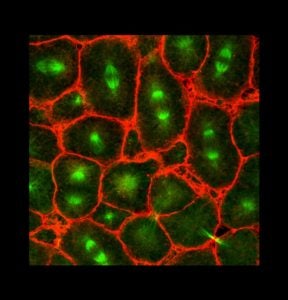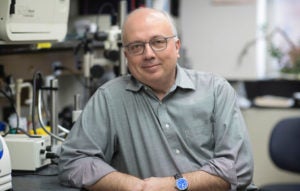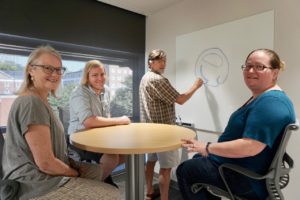DeSimone Lab

The DeSimone lab seeks to uncover mechanisms responsible for the coordination of single cell behaviors, the emergence of collective cell movements, and the sculpting of tissues – hallmark features of morphogenesis. Nowhere is the importance of these linked processes better illustrated than at the onset of vertebrate gastrulation when progressively differentiated communities of cells initiate a dramatic series of rearrangements that culminate in the segregation of germ layers and establishment of the vertebrate body plan. As these events unfold, the cells and tissues involved generate mechanical forces that are borne by both cell-cell (e.g., cadherin) and cell-ECM (e.g., integrin) adhesions. The spatial juxtaposition of simultaneous morphogenetic processes in the embryo ensures that any one tissue is subject to forces generated locally and at a distance. We are attempting to link this ebb and flow of mechanical signals to the emergence of specific behaviors of cells or groups of cells in vivo. Progress in this area promises to reveal fundamental principles of normal development operating at multiple levels of organization.
Morphogenesis
DeSimone Lab Website
View NowResearch in the DeSimone laboratory centers on the problem of morphogenesis, which is the process biological systems use to generate form and develop increasingly complex structures needed to carry out the specialized functions of tissues, organs and whole organisms.
DeSimone Lab Website
View NowPictures
- Dr.Doug DeSimone
Education
- BS, Biology, Worcester Polytechnic Institute
- PhD, Biology, Dartmouth College
- Postdoc, Cell and Molecular Biology, Massachusetts Institute of Technology
Research
- Cell Adhesion and Adhesion-Dependent Cell Signaling in Vertebrate Morphogenesis
Contact
Publications
Click to ViewEmail: desimone@virginia.edu
phone: 434-924-1881
Address
Pinn Hall, 3rd Floor
1340 Jefferson Park Ave
Charlottesville, VA 22903


